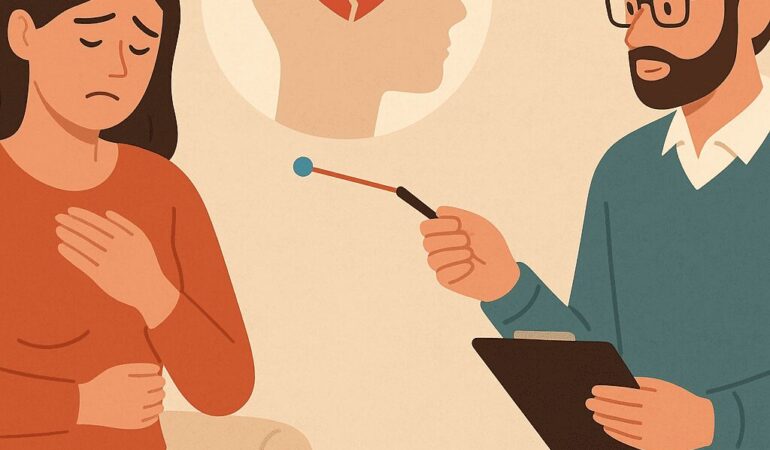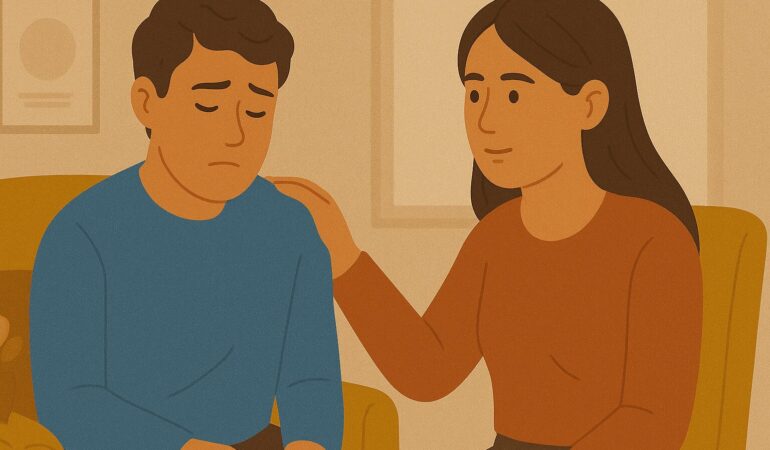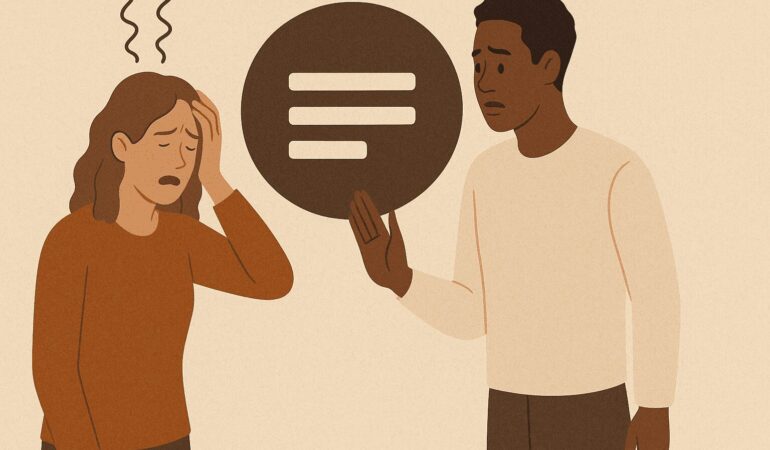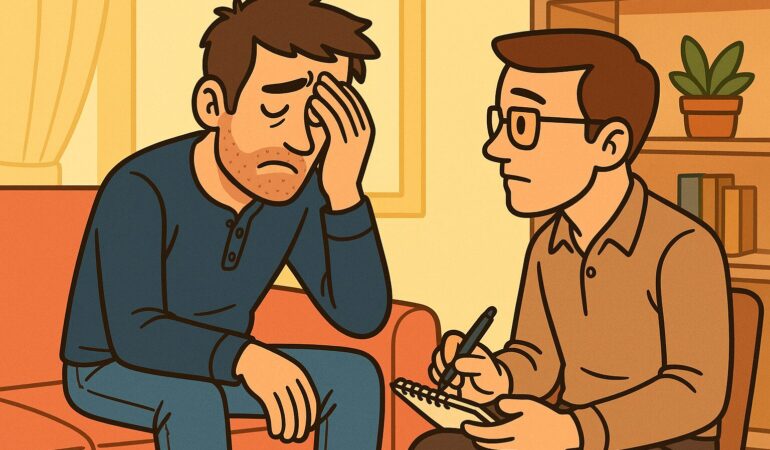Healing Attachment Wounds with Brainspotting
When Connection Hurts More Than It Heals
Have you ever found yourself longing for closeness but feeling a wall come up the moment someone tries to get near?
Or maybe you often feel responsible for keeping peace in your relationships — always the caretaker, the one who makes sure everyone else is okay.
Deep down, you might know these patterns didn’t start with your current partner, friends, or family. They began much earlier — in the places where connection and safety were supposed to coexist, but didn’t.
Those early cracks in connection are what therapists call attachment wounds.
And while they might be invisible, their echoes show up in every area of life — in love, friendships, parenting, and even how you talk to yourself when you’re struggling.
At Here Counseling in Pasadena, I often meet people who say, “I’ve done therapy before, I understand where this comes from… but I still feel it.”
That’s where Brainspotting can become a bridge — helping you move from understanding your pain to actually releasing it.
What Are Attachment Wounds?
Attachment wounds form when, as children, our emotional needs for love, attunement, or safety weren’t met consistently. Maybe a parent was loving but emotionally unavailable. Maybe you learned that being quiet or “good” was the only way to stay connected. Or perhaps love was mixed with fear, anger, or unpredictability.
These early experiences shape what’s called our attachment style — the internal map that teaches us what relationships mean. When that map is built on uncertainty, we may learn to:
- Fear of being abandoned or rejected.
- Keep emotions to ourselves to avoid conflict.
- Feel responsible for other people’s moods.
- Push people away before they can hurt us.
Even as adults, these learned patterns live deep in the nervous system. You can know you’re safe, but your body might still react like you’re not.
Why Understanding Isn’t Always Enough
Many clients tell me, “I’ve talked about my childhood in therapy. I get it. But I still freeze, panic, or shut down when something triggers me.”
That’s because attachment trauma doesn’t live in logic — it lives in the body.
These wounds are held in the brain’s subcortical regions — the parts responsible for instinct, survival, and emotional memory. They don’t speak the language of words. They speak through sensations, tension, and reactions that feel out of your control.
This is where Brainspotting becomes so powerful — it helps access those deeper parts of the brain where talk therapy can’t reach.
What Is Brainspotting?
Brainspotting is a powerful yet gentle therapeutic approach developed by Dr. David Grand. It’s based on the idea that where you look affects how you feel.
In a Brainspotting session, you and your therapist notice specific eye positions — called brainspots — that link to emotional or physical activation in the body. By focusing your gaze there and staying present with what arises, your brain naturally begins to process and release stored trauma.
It’s not hypnosis or guided imagery — you stay aware and in control. But your brain and body start communicating in ways they’ve long been trying to.
Brainspotting helps create the conditions your nervous system needs to heal — safety, attunement, and space. It allows you to finally access emotions that once felt too overwhelming to face, but now, in a safe environment, you can move through them instead of staying stuck.
How Brainspotting Helps Heal Attachment Trauma
Attachment wounds often involve the deepest kind of disconnection — the kind that says, “I’m not worthy of love,” or “If I show who I really am, I’ll be left.”
Brainspotting helps you approach these beliefs not by fighting them, but by meeting them with compassion and curiosity.
Here’s how it helps:
- Regulating the Nervous System:
When attachment wounds are triggered, your body may go into fight, flight, or freeze. Brainspotting helps you notice and soothe those physical reactions, teaching your nervous system what safety feels like again. - Reconnecting with Emotion:
Many people with attachment trauma learned early on to disconnect from their emotions to survive. Brainspotting gently helps you reconnect — not all at once, but in ways that feel manageable and empowering. - Rewiring Old Patterns:
Over time, the brain begins to form new pathways — ones rooted in calm, trust, and presence. You start to respond rather than react. - Building Secure Attachment from Within:
Healing attachment wounds isn’t about changing others — it’s about creating safety inside yourself. Brainspotting allows you to internalize a sense of secure attachment, often for the first time.
What a Session Feels Like
Each session begins by finding a place in your body where you feel the emotional intensity of what you’re working through — it might be a tight chest, a heavy stomach, or a lump in your throat.
Your therapist helps you find a corresponding eye position — your brainspot — that connects to that feeling.
From there, you notice what happens in your body as you stay present. Some people feel tingling, tears, warmth, or even deep calm. Others feel subtle shifts over time. There’s no right way — your brain knows what to do.
Unlike traditional talk therapy, you don’t have to retell every painful story. You just need to notice what’s happening inside you, in real time, with the support of someone attuned to you.
Common Signs You Might Be Carrying Attachment Wounds
You don’t need to have gone through overt trauma to have attachment wounds. They often show up in quieter ways:
- You crave closeness but fear rejection.
- You feel responsible for others’ happiness.
- You struggle to trust or depend on anyone.
- You often feel unseen, even in relationships.
- You avoid conflict but end up feeling resentful.
- You lose yourself trying to keep the peace.
These patterns aren’t flaws — they’re survival strategies that once kept you safe. Brainspotting helps you honor those parts of yourself, while slowly teaching them that it’s okay to let go.
Brainspotting vs. Traditional Talk Therapy
Talk therapy offers valuable insight, understanding, and connection. But when it comes to deeply rooted emotional patterns, understanding alone doesn’t always create change.
Brainspotting complements talk therapy by engaging the parts of the brain that talk can’t reach. It’s a bottom-up process — meaning healing starts in the body and nervous system, then integrates upward into thoughts and emotions.
Clients often describe Brainspotting as a felt experience rather than a cognitive one. It’s about releasing what’s been stored — the grief, the fear, the loneliness — so that your mind and body can finally align.
What Healing Attachment Wounds Can Feel Like
Healing isn’t instant or linear. But with time, you may notice:
- Feeling calmer in relationships.
- No longer needing to over-explain or please to feel safe.
- Being able to hold your boundaries without guilt.
- Feeling present and grounded in your body.
- Experiencing closeness without fear of losing yourself.
These shifts don’t mean forgetting what happened — they mean your nervous system has learned that you’re safe now.
What Therapy Looks Like at Here Counseling
At Here Counseling in Pasadena, therapy for attachment wounds isn’t about “fixing” you. It’s about creating a space where you can be seen and felt exactly as you are.
Sessions are guided at your pace — never rushed, never forced. Whether you’re new to therapy or have done deep work before, Brainspotting meets you where words leave off.
You’ll learn to notice the subtle ways your body responds to safety and stress, and over time, those new experiences of safety begin to rewrite the old story.
Both in-person and online Brainspotting sessions are available to clients across Pasadena and throughout California, offering flexibility and consistency in your healing process.
Reclaiming Connection — With Yourself and Others
When you’ve spent years feeling unseen or misunderstood, it’s easy to think real connection isn’t possible. But healing your attachment wounds doesn’t erase your past — it transforms your relationship with it.
Through Brainspotting, you can begin to feel safe in your body again.
You can learn that love doesn’t have to hurt, that closeness doesn’t mean danger, and that you can hold space for your own needs without losing connection to others.
You don’t have to do this alone. Healing begins when you feel safe — and that safety can start right here.
Begin Your Healing Journey
If this resonates with you — if you’re ready to gently explore the roots of your attachment wounds — Brainspotting can help you reconnect to yourself and others in ways you didn’t think possible.
Here Counseling offers Brainspotting therapy for attachment trauma, emotional healing, and relational growth.
Reach out today to schedule a consultation. Healing doesn’t happen overnight, but with the right support, it becomes possible — one moment of safety at a time.














